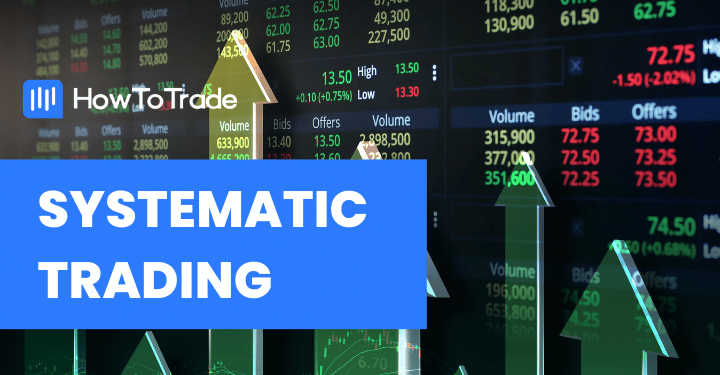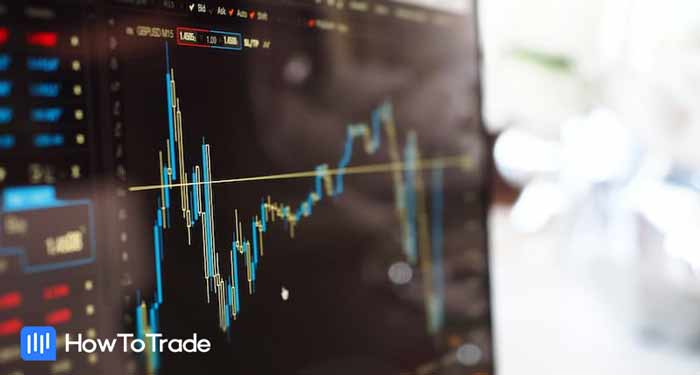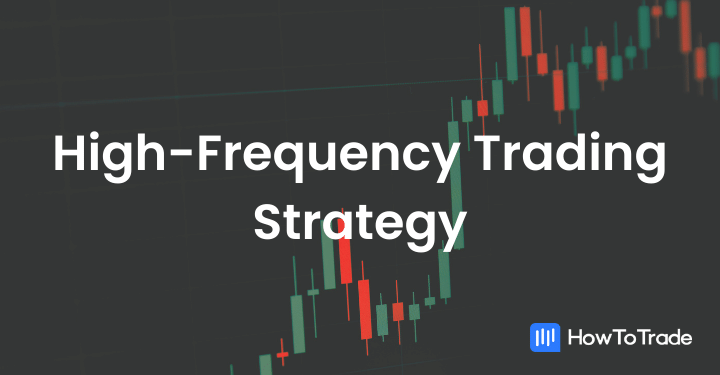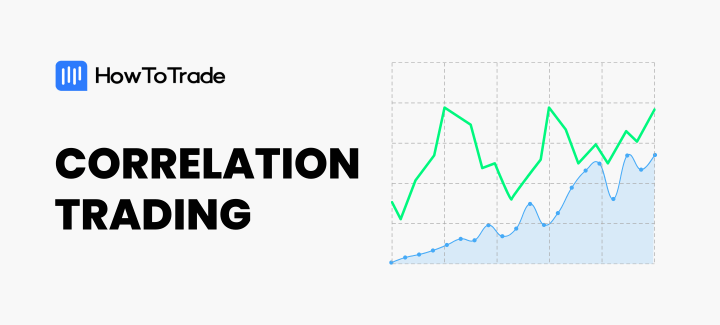
- Systematic trading uses predefined rules and algorithms to minimize emotional biases in financial market trading.
- It involves manual and automated methods, with the latter featuring minimal human intervention.
- Key steps in building a systematic strategy include strategy definition, simulation practice, backtesting, risk management, and continuous improvement.
- Strategies range from cash futures arbitrage to mean reversion, each with unique methodologies.
Benjamin Graham once said: “The investor’s chief problem — and even his worst enemy — is likely to be himself.” But is there a way to bridge this weakness? Yes, and many traders think systematic trading can do just that.
But what is Systematic Trading? How does it work? And how can I get started? We’ll answer all these questions and more in this article. Let’s get started.
 Table of Contents
Table of Contents
- What is Systematic Trading?
- Systematic Trading: Manual vs Automated
- How to Trade Systematically – Steps to Build a Systematic Trading Strategy
- Types of Systematic Trading Strategies
- How to Start with Systematic Trading?
- Systematic Trading – Pros and Cons
- Is Systematic Trading Better than Discretionary?
- Frequently Asked Questions About Systematic Trading
What is Systematic Trading?
Systematic trading, often synonymous with algorithmic trading, is essentially a methodical approach to trading in the financial markets that relies on a set of predefined trading rules based on quantitative analysis, historical data, and market indicators. These rules, which determine when to enter or exit a trade, the investment amount per trade, and risk management strategies, are then often executed in the market through automated computer systems (although it can also be done manually).
At basic, this trading approach uses technology, data, and algorithms to drive trading decisions, aiming to eliminate the influence of human emotions to foster consistency, efficiency, and a more calculated strategy in capitalizing on market movements. It stands in contrast to discretionary trading, where decisions are more subjective and based on the trader’s intuition and experience.
So, why is systematic trading gaining traction among investors and institutions like investment banks and hedge funds? The answer is straightforward: it offers a disciplined way to control the often distortionary effects of emotion, making it an increasingly preferred choice in today’s data-driven trading world.
In simple words, when using a systematic trading strategy, you are trying to robotize your trading process. And the same as robots make fewer mistakes than surgeons, a good systematic trading machine can make your trading more effective.
Systematic Trading: Manual vs Automated
Generally, systematic trading can be implemented in two main ways: manually or automatically. But what differentiates these two methods? Here’s a summary of their differences:
| Aspect | Manual Systematic Trading | Automated Systematic Trading |
| Execution | Trades are executed based on the trader’s judgment and interpretation. | Trades are executed automatically based on pre-set rules. |
| Human Involvement | High – requires active engagement in strategy building and implementation. | Low – system operates autonomously with minimal human intervention. |
| Decision Making | Based on the trader’s expertise and market analysis. | Based on predefined criteria and algorithms. |
| Efficiency | Depends on the trader’s skill and market understanding. | High, processes, and reacts to market data rapidly. |
| Consistency | Subject to human error and emotional biases. | High, operates on consistent, emotion-free execution. |
| Flexibility | More adaptable to changing market conditions. | Less flexible but can be overridden by the trader if necessary. |
| Speed of Execution | Slower, limited by human analysis and reaction time. | Faster, executes trades instantaneously based on algorithm triggers. |
So, in manual systematic trading, the systematic trader actively engages in building and implementing the strategy. This involves developing a set of rules based on market analysis and data but manually executing trades and making adjustments based on the trader’s judgment and interpretation of market conditions. It’s a more hands-on approach where the trader’s expertise plays a critical role in decision-making.
On the other hand, automated systematic trading, often referred to as algorithmic trading, takes the concept a step further by using technology to automatically execute trades based on predetermined criteria without the need for constant human intervention. In this model, once the strategy and rules are set, the system autonomously makes trading decisions and enters and exits trades. This method is notable for its efficiency, consistency, and ability to process and react to market data faster than any human could.
However, it’s important to note that even in automated trading, human oversight is not entirely removed. Systematic traders often retain the ability to intervene and override automated decisions if market conditions or other relevant factors warrant it.
Both methods have their strengths and are chosen based on the trader’s preference, resources, and trading goals. Manual trading allows for more nuanced decision-making based on a trader’s experience and instincts, while automated trading excels in speed, precision, and emotion-free execution. The choice between manual and automated systematic trading ultimately depends on the trader’s strategy, risk tolerance, and confidence in either their personal trading skills or in the algorithm’s design and effectiveness.
How to Build a Systematic Trading Strategy?
Building a systematic trading strategy is a structured process that involves several key steps. Each step is critical in developing a strategy that is robust, adaptable, and aligned with your trading goals. Here’s how to go about it:
Step 1: Develop a Trading Strategy
The foundation of systematic trading is the trading strategy itself. Begin by selecting a strategy that aligns with your strengths and interests. This step involves developing clear rules for generating buy and sell signals based on your chosen strategy. A strategy should be guided by a clear market philosophy and an understanding of the market anomalies you aim to exploit.
Then, once you have a trading strategy, you must either manually implement it in the markets or write a code for your chosen trading platform. Nowadays, with the rise of AI bots, you can also use ChatGPT to automate your trading strategy.
Step 2: Practice Trading on Simulated Platforms
Before risking real capital, it’s wise to practice your strategies on simulated trading platforms. This step of using a demo account allows you to test your strategies, refine your approach, and gain valuable experience without the financial risk.
Step 3: Backtest and Refine the Edge
Next, you need to use historical data to assess your strategy’s performance under different market conditions. Refine your strategy based on insights from backtesting your trading strategy on a paper trading account. Adjust parameters, rules, and risk management strategies to improve potential outcomes.
Step 4: Risk Management
Develop rules to control position sizes, define stop-loss levels, and manage overall portfolio risk. Understanding the concept of drawdowns and how to mitigate their impact on your trading capital is vital.
Step 5: Live Trading
Now, the fun begins. Start trading with a small amount of capital to test your strategy in a real market environment. This allows you to experience real-market conditions and emotions. Gradually increase your capital as you gain confidence and achieve consistent results.
If you’re looking for a reliable brokerage firm that could accommodate your trading style and give you the best trading environment, Switch Markets can be the broker of choice for you. Additionally, since you’re aiming to automate your trading, you must use a VPS service like ForexVPS. This can help you reduce the latency and avoid slippage and disconnections, which is a crucial factor in applying systematic trading strategies effectively.
Step 6: Improve Your Results
Regularly review and adapt your strategy to changing market conditions, preferably by using a trading journal template. Continuously experiment with different ideas and approaches to refine your strategy and improve performance.
In addition to these steps, a good systematic trading model should be simple, perform as expected in future environments, be adaptable to market changes, and be supported by a reliable data infrastructure.
Syatematic trading offers a disciplined way to control the often distortionary effects of emotion, making it an increasingly preferred choice in today’s data-driven trading world.
7 Types of Systematic Trading Strategies
In essence, there are endless ways for a trader to develop a systematic trading strategy. These strategies encompass a diverse range of approaches, each with its unique methodology and focus. But some of those are quite common for those who wish to automate their trading.
Here are some key types of systematic trading systems:
1. Arbitrage
One of the most popular systematic trading strategies. This strategy leverages the difference between two financial assets. Traders look for opportunities where they can profit from this price differential, often employing automated processes to capitalize on small, fleeting discrepancies. For example, an arbitrage trade can be the buying and selling of two company shares or commodity futures contracts traded on different exchanges.
2. Pair Trading
Also known as statistical arbitrage trading, this strategy involves simultaneously going long on one asset and short on another, typically two highly correlated assets. The goal is to profit from the temporary divergence in the correlation of these assets, with the expectation that they will eventually revert to their typical correlation.
3. Sentiment Analysis Trading
This approach uses software to analyze the sentiment or emotion attached to news about a company, predicting potential stock price movements. The strategy capitalizes on the anticipated upward or downward trajectory of an asset’s price following news releases. For instance, traders who use this new-based trading strategy often program their automated trading systems to detect certain phrases or economic data to identify profitable trades.
4. Momentum Trading
Momentum traders focus on assets exhibiting strong price movement in a particular direction. The strategy involves going long on assets in an uptrend and shorting assets in a downtrend, with algorithms determining the optimal time to enter and exit the market based on the momentum of the asset. To systematically use this strategy, traders often employ trend-following indicators.
5. Trend Following Strategies
These strategies aim to identify and capitalize on sustained price trends in the market. Trend followers buy assets in an uptrend and short-sell assets in a downtrend, believing that markets will continue existing trends for a certain period.
6. Mean Reversion Strategies
Based on the idea that prices tend to revert to their historical averages over time, the mean reversion strategy involves buying assets trading below their historical averages and selling those trading above. It capitalizes on the assumption that price deviations from the average will eventually correct themselves.
7. Statistical and Quantitative Strategies
These strategies use advanced mathematical and statistical models to identify trading opportunities. They often involve complex quantitative analysis, machine learning, and algorithmic execution, exploiting relationships between assets based on historical data.
How to Start with Systematic Trading?
Now that you have an idea of what systematic trading is all about, here’s a comprehensive guide on how to get started with it.
Step 1: Get the Right Qualification
A background in Science, Technology, Engineering, or Mathematics is beneficial for understanding the complexities of systematic trading. While having these backgrounds isn’t a must, you can make up for it by studying from books and courses. Without this foundational knowledge, you may not be able to understand the quantitative and technological aspects of executing trading strategies.
Step 2: Build Necessary Skills
Develop a solid grounding in quantitative research, problem-solving, strategic decision-making, and quantitative finance. Learn about risk management, portfolio optimization, and asset pricing models. Understanding financial instruments and market microstructure equips you with the knowledge to create effective trading strategies.
Step 3: Learn How to Write Codes and Do Data Analysis
Proficiency in programming languages like Python, R, or MATLAB can help in data manipulation, analysis, and visualization, which are core components of developing trading algorithms. Alternatively, you can use ChatGPT to program your strategies or hire a programmer to automate your trading system.
Step 4: Look for a Reliable Trading Platform
Next, you must find a reliable brokerage firm that enables you to connect to the markets easily. Explore different brokerage firms through demo accounts, and look for the one with competitive spreads and a reliable network. If you are planning to automate your trading, it’s also essential to find a VPS service to avoid slippage and disconnections and reduce latency.
Step 5: Research Various Systematic Trading Strategies
Learn about various systematic trading strategies, including trend following, mean reversion, and momentum trading. Familiarize yourself with the principles of backtesting, risk management, and position sizing.
Step 6: Continuous Learning
Stay updated on the latest developments in trading technology and market trends. Networking with professionals in quantitative finance can also provide valuable insights and opportunities.
Benefits and Limitations of Systematic Trading
Many traders see systematic trading as the cure-all for their trading troubles but the reality is, just like any other trading methodology, it has its drawbacks too. Let’s explore these two sides.
Benefits of Systematic Trading
Systematic trading certainly eliminates the emotional component of decision-making, ensuring consistency in trade execution, which is the main benefit of systematic trading. This methodical system, prevalent in hedge fund strategies, employs clear-cut directives for investing, with each position meeting specific system criteria, often in an automated environment.
With a backtested strategy, systematic trading enables traders to minimize errors and create a money-making machine.
Pros
- Systematic trading removes emotional biases from trading decisions.
- A rules-based approach ensures uniformity in how trades are executed.
- Enables thorough testing of strategies using historical data before live trading.
Limitations of Systematic Trading
The major challenge lies in the complexity of developing and maintaining such systems. This involves significant time, resources, and expertise. Additionally, the reliance on algorithmic strategies introduces risks such as technical glitches and the possibility of over-optimization, where a system is finely tuned to historical data but may not perform well in future, unpredictable market conditions.
Cons
- Potential for poor outcomes due to flawed assumptions in the trading algorithm.
- They may perform poorly in real-world conditions if too finely tuned to past data.
- These strategies might not adapt quickly to unexpected market shifts.
- Creating and maintaining systematic trading platforms is resource-intensive.
- Systems finely tuned to past data may not adapt well to future market changes.
Is Systematic Trading Better than Discretionary?
The debate between systematic and discretionary trading is a classic one, similar to comparing man versus machine. Each approach has its unique advantages and challenges, and the choice largely depends on the trader’s preferences, skill set, and the specific market conditions they face.
Leading industry research suggests that there is no clear evidence that one approach is superior to the other. Success in trading can come from both systematic and discretionary approaches, and often, it’s more about the trader’s skills and strategy than the method itself. A good discretionary trader can outperform a poorly developed trading algorithm and vice versa. The key is understanding which approach aligns better with your skills and emotional makeup. Some traders even choose to combine both approaches, using algorithms to generate recommendations and applying their discretion to execute trades.
But, in short, if you have a good set of parameters and you have some technical skills, why not automate it? Or, even if you don’t know how to automate it, why not manually do the same thing again and again? Trading is a lot about developing consistency, and this is what systematic trading is all about.
Risk Disclosure: The information provided in this article is not intended to give financial advice, recommend investments, guarantee profits, or shield you from losses. Our content is only for informational purposes and to help you understand the risks and complexity of these markets by providing objective analysis. Before trading, carefully consider your experience, financial goals, and risk tolerance. Trading involves significant potential for financial loss and isn't suitable for everyone.





